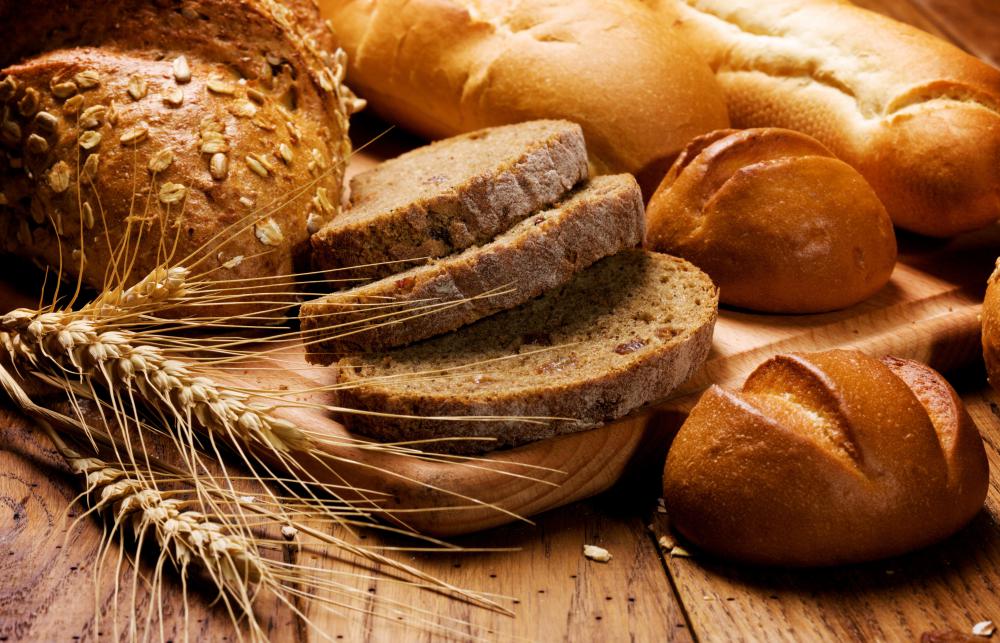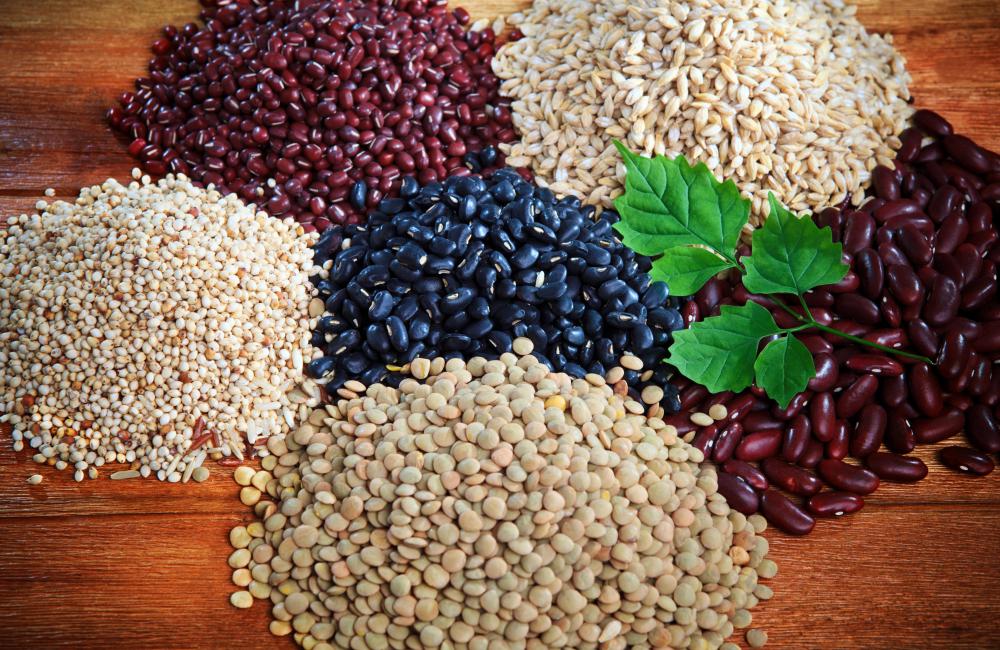At TheHealthBoard, we're committed to delivering accurate, trustworthy information. Our expert-authored content is rigorously fact-checked and sourced from credible authorities. Discover how we uphold the highest standards in providing you with reliable knowledge.
What is Insoluble Fiber?
Insoluble fiber is one of the two types of dietary fiber. Unlike its counterpart, soluble fiber, the insoluble form does not break down as it passes through the digestive tract, so it helps bulk up stools and promotes regular bowel movements. This fiber is found in many types of plants, and a diet high in fiber — of both soluble and insoluble varieties — tends to lead to improved health in a variety of ways.
Most people associate insoluble fiber with regularity. This type of fiber tends to bunch up in the digestive tract, and because it is not broken down and stays in solid form, it helps produce solid, well-sized stools. It also helps the stool retain more water. Solid, larger stool moves through the intestines more easily, and the higher water content makes regular bowel movements less of a strain.

Some health professionals believe that insoluble fiber acts as a cleanser of the digestive tract. Because it remains solid and fibrous as it travels through the intestines, it acts like a brush or sponge. Stray particles within the intestines tend to clump together with the fiber and are more easily removed from the body with normal bowel movements.

Both types of fiber appear to help patients with obesity and high cholesterol. It may decrease the risk of diabetes, heart disease, and many problems of the intestines. Having fiber in the diet tends to make a person feel more full, so it is easier to control portion size. It has few if any calories, so it makes a good addition to most weight loss plans.

Many products are clearly labeled as a source of insoluble fiber. Products to look for include whole grains, nuts, bran fiber, and many vegetables like celery, zucchini, and beans. People should eat as much of the food as possible, as the skin of vegetables and the husk of grains are often the greatest sources.
AS FEATURED ON:
AS FEATURED ON:














Discussion Comments
@ GlassAxe- Consuming the recommended 30+ grams of dietary fiber a day can be hard. Refined starches have very little fiber, and meat, milk, and eggs have none. For most people this is the bulk of their daily diet.
Here are some foods that contain high amounts of fiber.
Grains and Breads: Double fiber wheat (6 grams per slice), brown rice (3.5 grams/cup), shredded wheat (5.5 g/half cup), and all bran cereal (9 g/half cup).
Fruits and Vegetables: Apple (3.5 grams), banana (3 grams), blackberries (7.5 g/cup), beans (10 g/cup), lentils (15.5 g/cup), and potato (4.5 grams).
Knowing what foods have fiber can help you consume the suggested amount.
It is also a good idea to mix soluble fibers in your diet as well. While insoluble fibers are the brush to your intestinal tract, soluble fibers act as the lubricant. Soluble fibers also help regulate cholesterol in the blood by binding bile.
Established dietary guidelines recommend 14 grams of fiber for every 1000 calories in your diet. Recommendations are also a little higher for males and those in the middle-aged years of their lives.
Beans are an especially good source of fiber because they contain both soluble and insoluble fiber. Another source of soluble fiber is pectin, found in most fruits, some yogurts, and jellies.
Insoluble fiber also prevents the body from absorbing all of the fat. Partly for that reason it is helpful in weight loss.
Post your comments